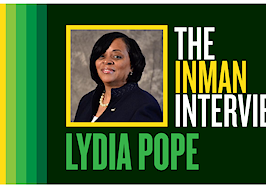It just got easier for many student loan borrowers to buy a home with an FHA mortgage now that policymakers have ditched a policy that often required lenders to make conservative assumptions about the burden imposed by their monthly student loan payments.
The policy penalized student loan borrowers applying for an FHA mortgage if their monthly payments were on hold, or if they were enrolled in a repayment program that allowed them to make reduced monthly payments. In those instances, FHA lenders were often required to assume that the borrower’s monthly student loan payments equaled 1 percent of their total outstanding student loan balance — even if their actual payments were less.
That meant that if you owed $29,000 in student loan debt — the average for 2019 graduates who borrowed to earn a bachelor’s degree — and weren’t paying down any loan principal, FHA lenders were required to assume that your monthly student loan debt burden was $290. That calculation pushed many borrowers over the FHA’s maximum debt-to-income (DTI) limit, disqualifying them for an FHA mortgage.
Now, FHA lenders can use a borrower’s actual monthly student loan payment when calculating their overall DTI — even if it’s zero, or isn’t paying down their student loan principal. That could help tens of thousands of additional first-time home buyers qualify for FHA-insured mortgages.
The FHA estimates that more than 80 percent of the mortgages it insures are taken out by first-time homebuyers, and that 45 percent of those borrowers also have student loan debt.

Lopa Kolluri
“These changes remove unnecessary constraints for otherwise creditworthy borrowers and reinforce FHA’s ability to serve those who need us most, including first-time homebuyers and underserved communities,” FHA Principal Deputy Assistant Secretary Lopa Kolluri said in a statement.
Lenders can voluntarily adopt the new FHA policy for student loans right now, but must implement it by Aug. 16.
Announced on the eve of the first observance of Juneteenth as a federal holiday, it’s hoped that the revised methodology for DTI calculations will help Black graduates, who are more likely to borrow for college, become homeowners.

Sen. Sherrod Brown, D-Ohio
“Too many generations of Black families are locked out of the opportunity to get an affordable mortgage, own their own home, and build wealth to pass on to their children and grandchildren,” said Senate Banking Chairman Sherrod Brown, in a statement. “I commend HUD and [Housing Secretary Marcia] Fudge for taking this first step to address inequities in our housing system and look forward to continuing to work together to increase access to homeownership and address disparities.”

Laurie Goodman
The changes to FHA’s DTI methodology bring it more in line with policies at Fannie Mae and Freddie Mac, said the Urban Institute’s Laurie Goodman, coauthor of an analysis urging uniform treatment of student loan debt among various federal mortgage programs.
“I think this is a really good move from FHA, and long overdue,” Goodman told Inman. “There are a lot of financially strapped borrowers that are using FHA because it’s the lowest down payment program, and a disproportionate number are minority borrowers. There is no reason for FHA to treat them more harshly than Fannie and Freddie.”
How the impact of student loans on DTI is calculated
A growing number of student loan borrowers are enrolled in income-driven repayment (IDR) plans, which allow them to make monthly student loan payments equal to just 10 or 15 percent of their discretionary income. If you have no discretionary income — — money that’s left over after taking care of basic necessities — your monthly student loan payment is zero.
In many cases, the monthly payments in an IDR plan aren’t fully amortizing — they’re too small to even cover all of the interest that’s owed, or they make only a small dent in loan principal. For that reason, borrowers in IDR plans can qualify for loan forgiveness after 10, 20 or 25 years of payments.
Fannie Mae
If a student loan borrower is enrolled in an IDR plan, Fannie Mae lets mortgage lenders use the actual monthly payment when calculating DTI — even if it’s zero. If the borrower’s student loans are in deferment or forbearance, the lender must assume a monthly obligation equal to 1 percent of the outstanding student loan balance, or a “fully amortizing payment” that will pay off the loan.
Freddie Mac
For student loan borrowers in IDR plans, Freddie Mac instructs mortgage lenders to use the actual monthly payment, unless it’s $0. In that case, lenders are told to assume a monthly payment that’s equal to 0.5 percent of the student loan balance, which would be $145 a month for a $29,000 student loan.
U.S. Department of Agriculture
Last year, the USDA updated its rules for calculating DTI for student loan borrowers who have deferred their payments or are enrolled in an IDR plan. Lenders are instructed to calculate the monthly debt burden using the actual loan payment, or 0.50 percent of the outstanding loan balance, whichever is greater. So a borrower paying $90 a month in an IDR plan to pay off $29,000 in student loan debt would be assumed to be making payments of $145 a month instead.
Department of Veterans Affairs
The rules for VA lenders allow them to calculate DTI using the actual student loan monthly payment for borrowers enrolled in an IDR plan, as long as it’s above a minimum threshold equal to 5 percent of the loan balance, divided by 12 months. So a borrower with $29,000 in student loan debt would be assumed to have a monthly student loan payment of at least $121 ($29,000 * .05 / 12). If the actual payment is below the threshold, the lender can still use it when calculating DTI, if it provides a statement from the student loan servicer that reflects the actual loan terms and payment information for each of the borrowers student loans.
Extreme student loan debt
IDR programs are especially popular with borrowers with graduate degrees, who often have even more extreme student loan debt — an average of $65,000 for a master’s degree, $143,000 for a law degree, and $242,000 for a medical degree. For a borrower applying for an FHA loan, those debt levels previously translated into an assumed monthly student loan burden of $650 for a master’s degree, $1,430 for a law degree, and $2,420 for a medical degree.
According to the Department of Education’s loan simulator, a recent law school graduate earning $60,000 a year as a public defender and repaying $143,000 in student loan debt at an average interest rate of 6.6 percent could qualify for Public Service Loan Forgiveness after making 10 years of monthly payments in an IDR plan. Payments would start at $341 a month, and assuming annual raises of 5 percent a year, rising over a decade to $578 per month. After 120 monthly student loan payments, they would have $162,857 in debt forgiven.
An attorney with the same debt and earnings but working in private practice would not qualify for Public Service Loan Forgiveness. But if they enrolled in an IDR plan, they’d also start out making monthly student loan payments of $341. Assuming their income grew at 5 percent a year, their monthly payments would grow to $1,013 over 20 years, when they could expect to have $180,641 in unpaid principal and interest forgiven.
Either way, under FHA’s new rule for calculating DTI, lenders are now able to use the hypothetical lawyer’s actual monthly student loan payment — $341 a month — instead of $1,430 (1 percent of their $143,000 loan balance).












